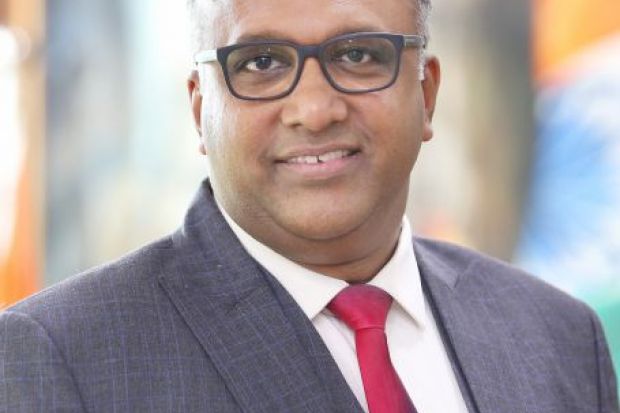A stronger culture of philanthropic giving must be developed in Indian higher education if the hopes for the development of the sector are to be realised, according to a vice-chancellor.
Raj Kumar, vice-chancellor of O.P. Jindal Global University, has been travelling across India to present his 10-point plan for expanding and reforming Indian higher education institutions.
“We need to seek a fundamental set of reforms, and it won’t happen just in Delhi,” he told Times Higher Education. “We want to engage with civil society and the academic community”.
The plan comes amid sobering news for Indian universities. In 2019, not one featured among the top 300 in THE’s World University Rankings.
“Historically, countries such as India have not had deep institutional public fundraising,” Professor Kumar said, noting that the number of universities has increased from a mere handful at the time of Indian independence to more than 900 today. “The system grew significantly, but we basically do not have the philanthropic institutions we ought to have.”
Most major universities rely on state funding, but not significantly on tuition fees or donations. Education spending is relatively low and is targeted at the primary and secondary levels.
“India is at a very preliminary stage of this evolution,” Professor Kumar said. “There is a culture of giving, but it is not well connected to education, particularly higher education.”
Professor Kumar said it would be a long time before India produced “any Stanfords or Harvards”. “The US is exceptional – that type of philanthropy is unique,” he said. Within Asia, affluent areas such as Hong Kong and Singapore were also “exceptional”.
But in the past few years, Professor Kumar has seen an “ecosystem emerging” in the area of philanthropy. “A new generation of institutions has emerged, as well as a handful of individuals with significant wealth who have chosen to build not-for-profit universities. We need to significantly expand that culture,” he said.
Professor Kumar called for more support for liberal studies, which are often overlooked in favour of science and technology fields. The six Indian institutions in the THE top 500 are all science and technology institutes, leaving the country’s top liberal arts or comprehensive universities ranked in the 601-800 bracket.
India also needs greater “intellectual diversity” and internationalisation, although that may be a steep road to climb. Unlike China, India has no structure for joint venture universities with foreign partners, while the government has recently increased the burden of red tape for overseas links.
“We need to recognise that we are living in an interdependent world. Institutions should understand the aspirations of young people, who want to engage with the world at large,” Professor Kumar said. “That should be the DNA of a Global University.”


